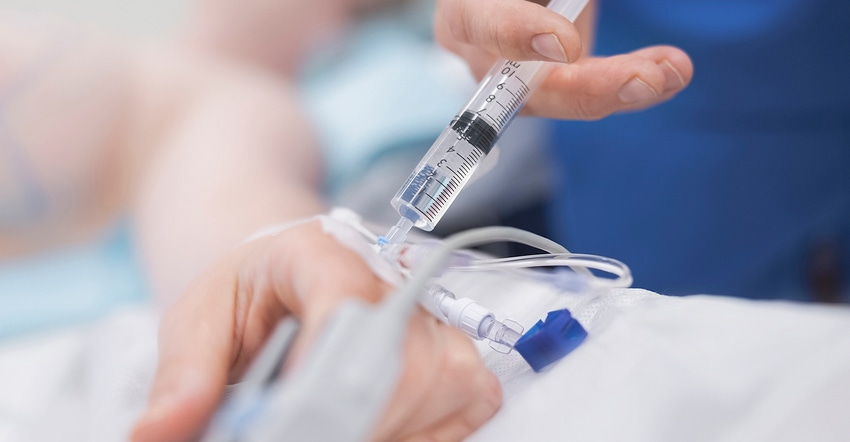Medical-grade materials and packaging suppliers introduce products that make greater use of renewables without sacrificing product quality.
November 14, 2022

Sustainability was the buzzword at K 2022 in Düsseldorf, Germany, this year. You would have been hard-pressed to find an exhibitor of plastics processing equipment, materials, or services who did not enshrine the concept at their booth. It was driven partly by brand owner and consumer demand, but also by a sincere effort to move toward a circular economy and shift away from practices that contribute to climate change. The medical sector historically has lagged in adopting sustainability initiatives for a number of sound reasons, not the least of which is the primacy of patient safety. It is also a heavily regulated industry, where a change in material composition, for example, entails steep hurdles. That’s not to say that the medtech industry and its suppliers are not eager to reduce waste and institute change when it can be achieved without lowering quality standards, as two recent developments from Hexpol TPE and Sterimed illustrate. Both innovations are featured this week at Compamed, the supplier showcase co-located with Medica in Düsseldorf, Germany.
Drop-in TPE solution
Hexpol TPE has added thermoplastic elastomers (TPEs) with bio-attributed content, based on the mass balance approach, to its Mediprene portfolio of TPEs for medical applications. Fossil-fuel-derived polymers in its TPE compounds can be replaced on a one-to-one basis with bio-attributed mass-balanced resin without negatively affecting the material’s technical properties, chemical composition, or regulatory status, said the company.
Based in Malmo, Sweden, with facilities around the world, Hexpol TPE said that it identified mass balance as a good option for its medical customers because the resulting TPE material is a drop-in solution with identical properties. Monomers from renewable sources, but with the same quality and purity as those of fossil origin, are used to make bio-circular polymers.
Mass balance allows for a gradual increase of the bio-circular share of resin in a compound in a step-by-step approach using existing infrastructure, explained Hexpol TPE. The bio-circular feedstock is added at the beginning of the process, traced through intermediate transformations, and allocated to the end product. As both bio-circular and fossil feedstocks are mixed, it is not possible to guarantee a specific concentration in the final product, added the company.
Third-party verification is required to audit the mass balance allocation and verify the accuracy of product labelling. Hexpol TPE said that its Swedish plant was among the first TPE compounders to achieve International Sustainability and Carbon Certification (ISCC PLUS) last year. ISCC PLUS ensures traceability through the supply chain and correct and transparent use of the mass balance approach. Certified companies must meet specific environmental and social standards, creating a chain of custody.
Mass balance versions of Hexpol TPE’s Mediprene 500M standard series are available, as well as customized grades. Typical applications include airway management, face masks, resealable membranes, IV systems, seals, and connectors.
Hexpol TPE also can provide cradle-to-gate Product Carbon Footprints (PCFs). The methodology is built upon the principles of ISO 14067:2018 for the carbon footprint of products, which is associated with the principles and requirements of ISO standards 14040:2006 and 14044:2006 for life cycle assessment. The PCF provides CO2 equivalent data per kilogram of TPE, calculated based on raw materials and their transportation, product manufacturing, and packaging.
Compound contains mostly renewable materials and bio-sourced carbon
Also beating the sustainability drum, French developer and manufacturer of medical packaging Sterimed has added renewables-based packaging to its Polybond portfolio of polymer-reinforced cellulose-based materials.
The new Polybond CGP 85 compound is composed mostly of renewable materials and bio-sourced carbon, said Sterimed in the announcement. The innovation resides in the material’s unique fiber mesh structure, which mixes cellulose with a high content level of synthetic binders. The binders ensure optimal mechanical performance, and cellulose contributes to breathability and an efficient sterilization process. This combination enables Polybond CGP 85 to approach the capabilities of polyolefins.
The material also benefits from Sterimed’s unique grid-pattern coating, which balances sealing integrity with an aseptic presentation. It performs at the highest level, even under challenging opening conditions, such as a 180˚ peel open-angle, said Sterimed, and the substrate is engineered to prevent the risk of break, puncture, or burst.
Both companies are exhibiting at Compamed in hall 8A — Hexpol TPE is in booth R14 and Sterimed can be found in booth L01. Co-located with Medica, the world’s largest annual medical trade show, Compamed runs from Nov. 14 to 17 at Messe Düsseldorf in Düsseldorf, Germany.
About the Author(s)
You May Also Like




